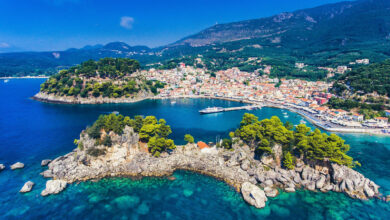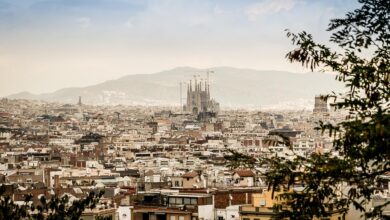Jamaica is a small island nation located in the Caribbean Sea, known for its lush landscapes, vibrant culture, and rich history. Despite its small size, Jamaica has had a significant impact on the world, with its music, cuisine, and political activism shaping the region and beyond.
One of the defining characteristics of Jamaica is its natural beauty, which is characterized by lush forests, rolling hills, and a stunning coastline. The island is home to several national parks and protected areas, including the Blue Mountains and the Cockpit Country, which offer visitors the opportunity to explore Jamaica’s rich biodiversity. The island is also famous for its beaches, including Montego Bay, Negril, and Ocho Rios, which are popular with tourists from around the world.
Another aspect of Jamaica that draws visitors is its rich cultural heritage, which is reflected in its music, dance, and festivals. Jamaica is famous for its reggae music, which originated on the island in the 1960s and has since become an international phenomenon. The island is also home to several important cultural events, including the annual Reggae Sumfest, which attracts musicians and fans from around the world.
Jamaica has a long and fascinating history, which has been shaped by centuries of colonization, slavery, and political activism. The island was first inhabited by the indigenous Taíno people, who were later replaced by African slaves brought over by European colonizers. Today, Jamaica is a proud and independent nation, and its history of political activism and resistance continues to shape its cultural landscape.
Despite its many attractions, Jamaica has faced significant economic and political challenges in recent years. The island has a high poverty rate and a struggling economy, and it has been affected by crime and violence in some areas. However, despite these challenges, Jamaica remains a resilient and proud nation, with a strong and vibrant culture that continues to inspire and captivate visitors from around the world.
In conclusion, Jamaica is a small island with a big impact, offering visitors a unique blend of natural beauty, rich culture, and fascinating history. From its lush landscapes and stunning beaches to its vibrant music and political activism, Jamaica is a destination that should not be missed. Despite its challenges, Jamaica remains a proud and resilient nation and a testament to the enduring spirit of its people.
Best Time to Visit Jamaica
The best time to visit Jamaica is from mid-December to mid-April, during the dry season. This period is characterized by warm and sunny weather, with little rainfall, making it ideal for outdoor activities such as beach lounging, hiking, and exploring the island’s attractions. June to November is the rainy season, which can bring heavy downpours and higher humidity.
Average Temperature in Jamaica
Jamaica has a tropical climate, with average temperatures ranging from 25°C to 30°C (77°F to 86°F) throughout the year. There is little variation in temperature, with the warmest months being from May to October and the coolest months from November to April.
The average temperature in Kingston, Jamaica’s capital, ranges from 25°C to 29°C (77°F to 84°F) throughout the year. Coastal areas tend to be slightly warmer, with temperatures in Montego Bay ranging from 26°C to 30°C (79°F to 86°F).
Jamaica is also known for its high humidity levels, which can make temperatures feel warmer than they actually are. It is important to stay hydrated and take breaks from the heat, especially during the warmer months.
Overall, Jamaica has a warm and tropical climate, with average temperatures ranging from 25°C to 30°C (77°F to 86°F) throughout the year.
Credits
Photo: Treasure Beach, Jamaica. Photo by: Caspar Rae on Unsplash



